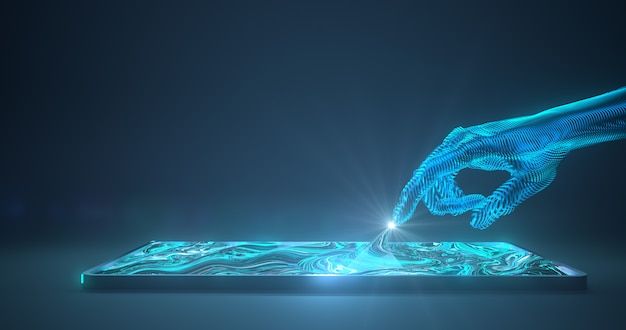We tap, swipe, and pinch our screens without a second thought. Yet, few of us ever stop to ask: How do touchscreens actually work? From smartphones and tablets to ATMs and smart fridges, touchscreens are everywhere—and their presence is only growing.
In this digital age, the magic behind touchscreens is a fascinating intersection of science, design, and innovation. At Fuzzy Port, we believe in exploring the invisible forces that power our digital life. So let’s dive into how these essential interfaces came to be, and why they continue to shape the future of tech.
A Brief History of Touchscreen Technology

The story of touchscreens goes further back than most think. The first touchscreen was invented in the 1960s by E.A. Johnson, who developed a capacitive model used for air traffic control.
Fast forward to the 2000s, and Apple’s iPhone launched the modern era of multitouch interfaces, forever changing how we interact with devices. Since then, touchscreen innovation has become a central force in product design and user experience.
How Touchscreens Actually Work
Despite their simplicity on the surface, touchscreens rely on sophisticated technology behind the glass. There are three main types:
1. Capacitive Touchscreens
Used in most smartphones today, these screens detect touch through the electrical charge in your finger. The human body conducts electricity, and when you touch the screen, it disturbs the electrostatic field—telling the device where you touched.
2. Resistive Touchscreens
Found in ATMs and older phones, resistive screens rely on physical pressure. They are made up of multiple layers that register a touch when pressed together. While less responsive than capacitive screens, they’re durable and can be used with gloves or a stylus.
3. Infrared and Surface Acoustic Wave (SAW) Screens
Less common but incredibly precise, these use light or sound waves across the screen’s surface. When you touch it, the waves are interrupted, and the location is detected.
Why Touchscreens Feel Magical
Part of the emotional power of touchscreens comes from how intuitive and responsive they are. There’s a sense of control and immediacy that connects us to our digital environments. This design simplicity hides the complexity beneath, making it feel almost magical.
Moreover, the integration of haptic feedback—the gentle vibrations you feel after a tap—adds another sensory layer that mimics real-world interactions.
The Role of Touchscreens in Modern Innovation
Touchscreens aren’t just for phones anymore. They’re shaping:
- Healthcare (digital patient check-ins and diagnostic tools)
- Retail (self-service kiosks)
- Education (interactive learning displays)
- Entertainment (smart TVs, gaming consoles)
As industries embrace digital transformation, touchscreens play a vital role in making technology more human-centered.
At Fuzzy Port, we explore how tools like touchscreens enable smarter user experiences and improve digital interfaces. Our article on the importance of UX in app development dives deeper into this topic.
The Future of Touchscreen Technology
Touchscreens will keep evolving. We’re already seeing foldable displays, transparent screens, and touch-sensitive textiles. Some experts even believe that holographic and gesture-based interfaces could eventually replace screens altogether.
Yet no matter how advanced they become, the goal remains the same: to create seamless connections between humans and machines.
Why It Matters
Understanding the technology behind touchscreens isn’t just for engineers. It helps users and creators alike appreciate the innovation behind the tools we rely on. For startups, designers, and developers, knowing how touch interfaces work can inform better product decisions—and even inspire your next big idea.
So the next time you unlock your phone or scroll through an app, take a second to appreciate the hidden complexity beneath your fingertips.
It’s not just a screen—it’s a gateway to the future.







